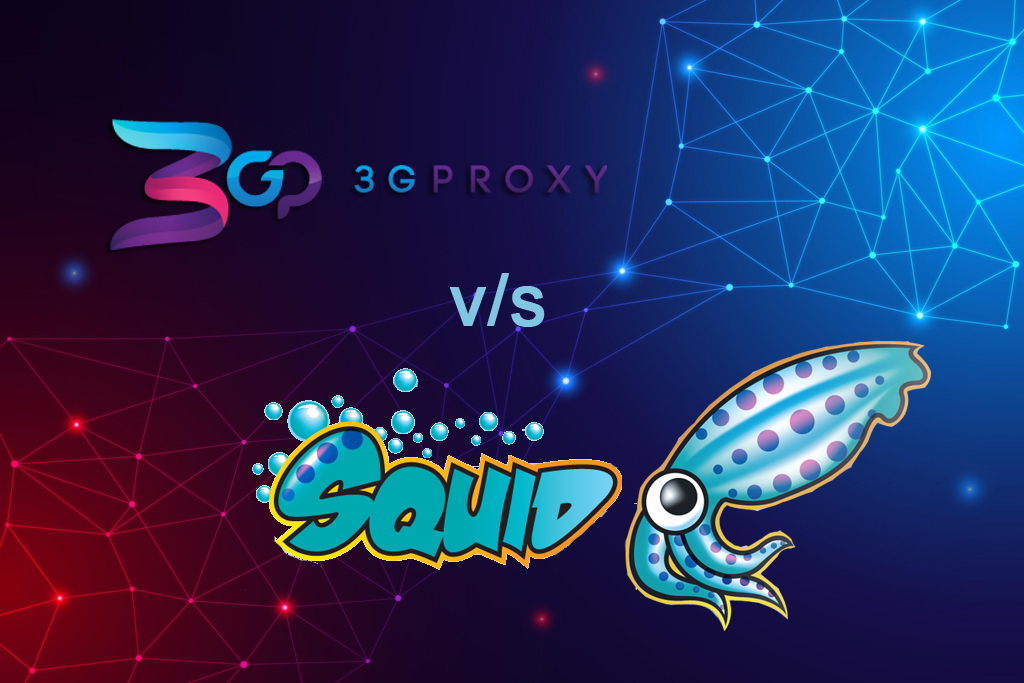Proxy servers are indispensable tools for managing network traffic, enhancing security, and optimizing web performance. They serve as intermediaries between clients and servers, enabling tasks such as caching frequently accessed content, filtering traffic, and enforcing access policies. Two widely used open-source proxy servers, 3proxy and Squid, cater to different needs and environments. 3proxy is known for its simplicity and low resource usage, making it ideal for small-scale setups, while Squid offers robust features and scalability for enterprise-level deployments. This article provides an in-depth comparison of 3proxy and Squid, covering their features, performance, use cases, recent updates, and community perspectives as of July 2025. By examining these aspects, we aim to help users choose the right proxy server for their specific requirements.
Background and Overview
3proxy
3proxy is a lightweight, open-source proxy server designed for simplicity and efficiency. It supports multiple protocols, including HTTP, HTTPS, SOCKS, FTP, and POP3, making it versatile for basic proxy tasks. Initially developed as a personal project, 3proxy is compatible with Windows, Linux, Unix, and macOS, and is particularly suited for small networks or systems with limited resources. Its compact size and ease of configuration make it a popular choice for users who need a straightforward proxy solution without complex features.
- Key Characteristics:
- Free and open-source under GNU/GPL or BSD-style licenses.
- Lightweight, requiring minimal CPU and memory.
- Highly configurable for basic to moderately complex setups.
- Supports installation as a Windows service or Linux daemon.
Squid
Squid is a mature, feature-rich caching proxy server widely used by ISPs, enterprises, and organizations with high web traffic. It supports HTTP, HTTPS, FTP, and Gopher, with advanced capabilities like caching, content filtering, and SSL Bump for HTTPS traffic inspection. Squid is designed to optimize web delivery by reducing bandwidth usage and improving response times. Its scalability and extensive configuration options make it a go-to choice for large-scale deployments, though it requires more resources and technical expertise than 3proxy.
- Key Characteristics:
- Open-source under the GNU GPL license.
- Advanced caching to reduce server load and bandwidth usage.
- Extensive access controls and authentication options (e.g., SSO, NTLM).
- Scalable for high-traffic environments, with support for cache hierarchies.
Features Comparison
The following table summarizes the key features of 3proxy and Squid, highlighting their differences and capabilities:
| Feature | 3proxy | Squid |
|---|---|---|
| Protocols Supported | HTTP, HTTPS, SOCKS, FTP, POP3 | HTTP, HTTPS (SSL/TLS), FTP, Gopher |
| Caching | Minimal caching support | Advanced caching for bandwidth optimization |
| Content Filtering | Basic access control | Advanced filtering with plugins (e.g., os-proxy-useracl) |
| Authentication | Basic (e.g., login/password) | Multiple types (login/password, IP, NTLM, SSO) |
| Performance Under Load | Suitable for low to moderate loads | Excels in high-load environments |
| Resource Usage | Low; ideal for resource-constrained systems | High; requires significant CPU and memory |
| Configuration | Simple and straightforward | Complex; requires networking expertise |
| Community & Support | Smaller community; limited documentation | Large, active community; extensive documentation |
| Integration | Limited integration options | Supports WCCP for Cisco integration |
| Recent Features (2025) | TLS SNI proxy, autodetect proxy type | Bug fixes, SNMP improvements, SSL Bump |
3proxy Features
- Lightweight Design: 3proxy is optimized for low-resource systems, making it suitable for small servers or personal use.
- Protocol Versatility: Supports a wide range of protocols, including SOCKS v4/v4a/v5, HTTP, HTTPS, FTP, and POP3, enabling diverse applications.
- Ease of Configuration: Its configuration file is simple, allowing quick setup for basic proxy tasks.
- Recent Updates (Version 0.9.5, March 2025):
- Added
tlspr(SNI proxy) andauto(autodetect proxy type) services. - Rewritten SSLPlugin for improved TLS server and certificate support.
- New
-goption for grace delay to manage connection timeouts. - Security fixes and minor bug corrections.
- Added
Squid Features
- Advanced Caching: Squid caches frequently requested web pages, reducing bandwidth usage and improving response times.
- Content Filtering and Security: Supports advanced access control lists (ACLs), content filtering, and SSL Bump for HTTPS traffic inspection.
- Scalability: Designed for high-traffic environments, Squid can handle thousands of simultaneous connections and supports cache hierarchies.
- Recent Updates (Version 6.14, June 2025):
- Fixed bugs (e.g., Bug 5352: RESPMOD hang, Bug 5489: Solaris linking issues).
- Improved SNMP
cacheNumObjCountfor accurate cache reporting. - Enhanced handling of Surrogate-Capability headers and build fixes for systems without
shm_open().
Performance and Complexity
3proxy
- Performance: 3proxy performs well under low to moderate loads, making it suitable for small networks or personal use. However, it may struggle in high-traffic scenarios due to its limited feature set and lack of advanced caching.
- Complexity: Its configuration is straightforward, with a simple configuration file that can be edited quickly. This makes it accessible to users with basic networking knowledge, though its limited documentation can be a drawback.
Squid
- Performance: Squid excels in high-load environments, handling thousands of requests efficiently. Its caching and load-balancing capabilities make it ideal for enterprise settings, as demonstrated in deployments like Wikimedia, where it achieves a 75% cache hit rate (Squid Official Website).
- Complexity: Squid’s configuration is complex, with an extensive
squid.conffile that requires in-depth networking knowledge. This complexity can be a barrier for new users but allows for fine-tuned control in advanced setups.
A case study from Habr highlights Squid’s superior performance in high-load scenarios. In Traffic Inspector Next Generation (TING), a modified Squid version showed no performance drop with thousands of rules and users, while 3proxy caused CPU load issues under similar conditions.
Use Cases
3proxy
- Personal Use or Small Networks: Ideal for home users or small businesses needing basic proxy functionality, such as routing internal traffic to external resources.
- Resource-Constrained Environments: Its low resource usage makes it suitable for low-memory systems or virtual private servers (VPS) with limited CPU and RAM.
- Basic Proxy Tasks: Useful for simple access control or protocol-specific routing (e.g., SOCKS for anonymity).
Squid
- Enterprise Networks: Widely used by ISPs, large organizations, and enterprises with high web traffic, Squid is ideal for managing complex network environments.
- Web Security and Content Acceleration: Its caching and filtering capabilities reduce server load and improve delivery speeds, making it suitable for content-heavy websites.
- Policy Enforcement: Schools, libraries, and organizations with strict internet access policies use Squid for content filtering, authentication, and HTTPS inspection.
Community and Development
3proxy
- Community: 3proxy has a smaller community, with limited documentation available on its official website (3proxy.ru) and GitHub (github.com/3proxy/3proxy). This can make troubleshooting challenging for new users.
- Development: Actively maintained, with version 0.9.5 released in March 2025, addressing security issues and adding new features like SNI proxy support.
Squid
- Community: Squid benefits from a large, active community with extensive documentation and support forums. Resources like the Squid website and GitHub repository provide detailed guides and release notes.
- Development: Regular updates ensure Squid remains secure and functional. Version 6.14, released in June 2025, includes critical bug fixes and performance improvements.
Strengths and Weaknesses
3proxy
- Strengths:
- Lightweight and efficient, ideal for low-resource systems.
- Simple configuration, accessible to beginners.
- Supports a wide range of protocols for versatile applications.
- Recent updates enhance HTTPS handling and security.
- Weaknesses:
- Limited advanced features like caching or content filtering.
- Not suitable for high-traffic or enterprise environments.
- Smaller community and limited documentation.
Squid
- Strengths:
- Robust feature set, including caching, filtering, and HTTPS inspection.
- Scalable for high-traffic environments, with proven performance in enterprise settings.
- Large community and extensive documentation.
- Regular updates ensure security and compatibility.
- Weaknesses:
- Resource-intensive, requiring significant CPU and memory.
- Complex configuration with a steep learning curve.
- Unpatched bugs reported in 2023 raise concerns, though recent updates address some issues (The Register).
Modern Relevance and Community Opinions
Traditional proxy servers like Squid are sometimes viewed as outdated due to the prevalence of HTTPS, which reduces caching effectiveness. Modern alternatives like DPI engines, Zscaler ZIA, Palo Alto, or Cisco Umbrella are often recommended for advanced security needs. However, Squid remains relevant for specific use cases, such as bandwidth throttling, logging, and server-side proxying and 3proxy is valued for its simplicity and lightweight design.
Recent Updates (2025)
Both 3proxy and Squid have received significant updates in 2025, ensuring they remain viable for modern networking needs:
- 3proxy (Version 0.9.5, March 2025):
- Fixed a potential crash due to
strcpy()issues. - Introduced
tlspr(SNI proxy) andauto(autodetect proxy type) services. - Rewritten SSLPlugin for improved TLS support.
- Added
-goption for grace delay and multiple bug fixes. - Source: 3proxy GitHub.
- Fixed a potential crash due to
- Squid (Version 6.14, June 2025):
- Fixed bugs affecting RESPMOD and Solaris builds.
- Improved SNMP metrics and Surrogate-Capability handling.
- Enhanced build compatibility and documentation.
- Source: Squid GitHub.
Conclusion
The choice between 3proxy and Squid depends on your network’s scale, resource availability, and feature requirements. 3proxy is the better choice for small-scale setups or resource-constrained environments, offering simplicity and low overhead. Squid is ideal for enterprise environments with high traffic, where advanced features like caching, content filtering, and scalability are critical. Both proxies are actively maintained, with 2025 updates improving their security and functionality. For small networks or basic proxy needs, 3proxy’s lightweight design is hard to beat. For complex, high-traffic scenarios, Squid’s robust feature set and proven performance make it the preferred option.







